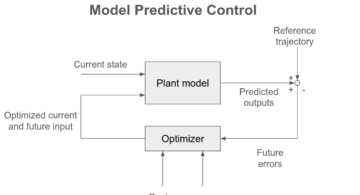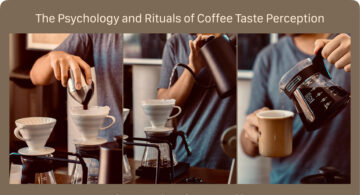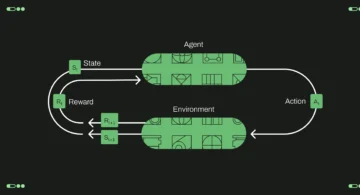Eyes, JAPAN
Sake Tasting at the Apple Picking Event
Kenny
Introduction
On the 28th of October 2018 the 25th Apple Picking Event took place in Aizu-Wakamatsu. I used the gathering of people to get some information and data for the Sake AI Project, where we try to create cognitive computing, which should be able to find new creative international dishes for Sake from Aizu. In the following I go over the sake and food I used for the foodpairing and the results of the tasting.
Content
For the sake I chose three different Sake from Aizu-Wakamatsu. A crisp-sweet one, a rich-dry one and a rich-sweet one. Translated to Japanese they are called tanrei-amakuchi, hojun-karakuchi and hojun-amakuchi in the same order. By that I could pair a lot of different food.

The food selection contained of:
- Raisin bread from America
- Emmental cheese from the Switzerland
- Comté cheese from France
- Crackers from Italy
- Bacon from America
- Salami from Italy
- Bacon chips from America
- Olives from Italy
- Baumkuchen from Germany
- Caramel from Germany
- Chocolate from the Netherlands
- Haribo from Germany
- Dry fruit cranberries from Canada

For the questionnaire I used Google Forms to get some user feedback and provided the link fort he poll via QR-code. By that everyone was able to scan the QR-Code and fill out the poll comfortably on their own smartphones. Now I will show the results one by one, backed up with some graphics and give some insight why I chose particular food for a specific sake:
#1 Yamanoi (Junmai Daiginjo, Pure) – 山の井(純米大吟醸 生)
Tanrei Amakuchi (Crisp Sweet)

Light and smooth Sake goes well with light food, that is normally an appetizer and has a clean aftertaste. That’s why I chose some Cheese from the Switzerland and French, Raising Bread from America and Crackers from Italy, that normally get served before the main course. Crisp Sweet Sake is low on acidity and amino acid to remain the soft note and doesn’t get dry and too high on aroma and taste. The sake should be served cold.





As you can see cheese in general pairs very well with crisp-sweet sake. Comté cheese has a better result, because it is more mild than the Emmental cheese, which has a more nutty taste. The american raisin bread got some positive results, too, while the Italian crackers had some mixed results but I think the variance of personal taste plays a huge role on that, because the crackers were really dry. For the question, if the sake warmed up would taste better everyone agreed, that the sake should be served cold.
#2 Beppin Yauemon (Junmai Ginjo) – 別品 彌右衛門(純米吟醸)
Hojun Karakuchi (Rich Dry)

Rich Dry and Full-Bodied Sake features a bitter and rich taste which goes well with all kind of greasy and oily food, that has a complex taste. It matches with all sort of meat. For this sake I chose Salami from Italy, Bacon from America, Bacon Chips from America and oily Olives from Italy, because they all share a greasy taste. Rich Dry Sake is high on acidity and amino acid to match with the high aroma and taste of the above mentioned food. It can be served cold, but also warm to get an even stronger aroma.





As you can see all four foods had positive results, with Bacon chips having the best results. All of them share a rich taste and that‘s the reason why rich sake pairs so well with it, because it enhances the taste of the food. Two participants suggested to try rich-dry sake with chocolate and dried fruits, so I will definetly check that out on a later date. For warming up the sake I got some interesting results, too. One third suggested to warm the sake up, so that’s another thing I am going to try out with that kind of food.
#3 Karahashi (Junmai Ginjo) – 唐橋(純米吟醸)
Hojun Amakuchi (Rich Sweet)

Rich Sweet or Fruity Sake features an aroma of fruit and flowers. It goes well with fresh and complex aroma and also with all kind of sweet food. That’s why I picked four different sweets: Baumkuchen, Haribo and Caramel from Germany and Chocolate from the Netherlands. On top of that I chose Dry Fruit Cranberrys from Canada. They taste a little bit sour, but maybe they will match great, too. The sake should be served cold to remain soft and doesn’t have too much aroma, so it is possible to focus on the complex taste of the food.






The rich-sweet sake had out of the three sake the worst results. The Haribo, chocolate, caramel and the dried fruits all had really mixed results, with caramel being the worst. In my opinion the reason for that is, that you need a really long time to eat the caramel and it just doesn’t fit to eat it while drinking any liquid. On the other hand the Baumkuchen had some really great outcomes, so I think rich-sweet sake will pair well with all kind of chocolate taste and desserts with a similiar taste. As you can see, expect the Baumkuchen, it really depends on personal taste here. Thats means most of this food doesn’t fit for foodpairing. One participant suggested Strawberry salad, wich I think will pair very well, too, because of it’s sweetness. I will try that out on a later sake tasting. Most of the participants suggested to not warm the sake up, with one participant stating it would taste better with a warmed up sake. So that‘s worth another shot.

To get some information about the participants I asked them, how often do they drink sake. Three of them drink sake rarely, one participant once a week, another several times a week and one stated that he normally never drinks sake. The results were perfect for my testing because we had really diverse participants with different drinking habits.
Conclusion
In my opinion the sake tasting was a success and made the Apple-Picking event even better. We got a lot of different opinions on matching Aizu Sake with international food by participants with different sake drinking habits and can use the information for further food pairing or can even use the data for later implementations. In addition to that more people now know about the project, which is really great, too. I met some new people and one of them can maybe even help me to explore and find more matching food for the sake pairing. Overall I can say it was a great experience for me and I enjoyed it a lot and I think most of the people that participated in the tasting did so, too. Even the kids, which tried some Haribo without the sake.
 2025/12/12
2025/12/12 2025/12/07
2025/12/07 2025/11/06
2025/11/06 2025/10/31
2025/10/31 2025/10/24
2025/10/24 2025/10/03
2025/10/03 2025/08/30
2025/08/30 2025/08/22
2025/08/22